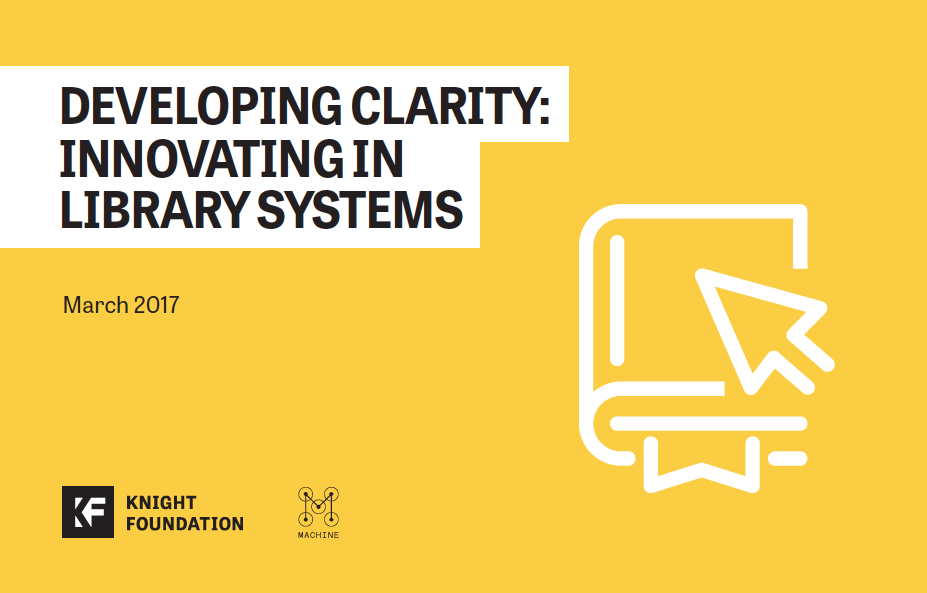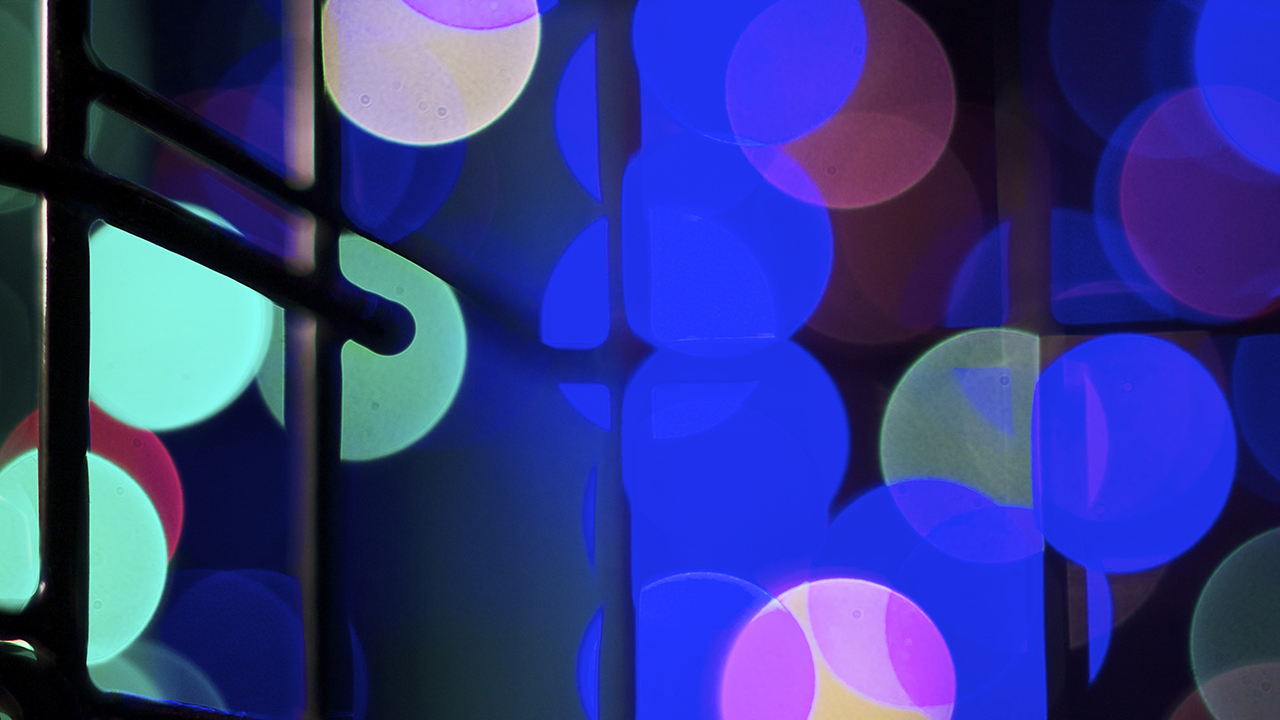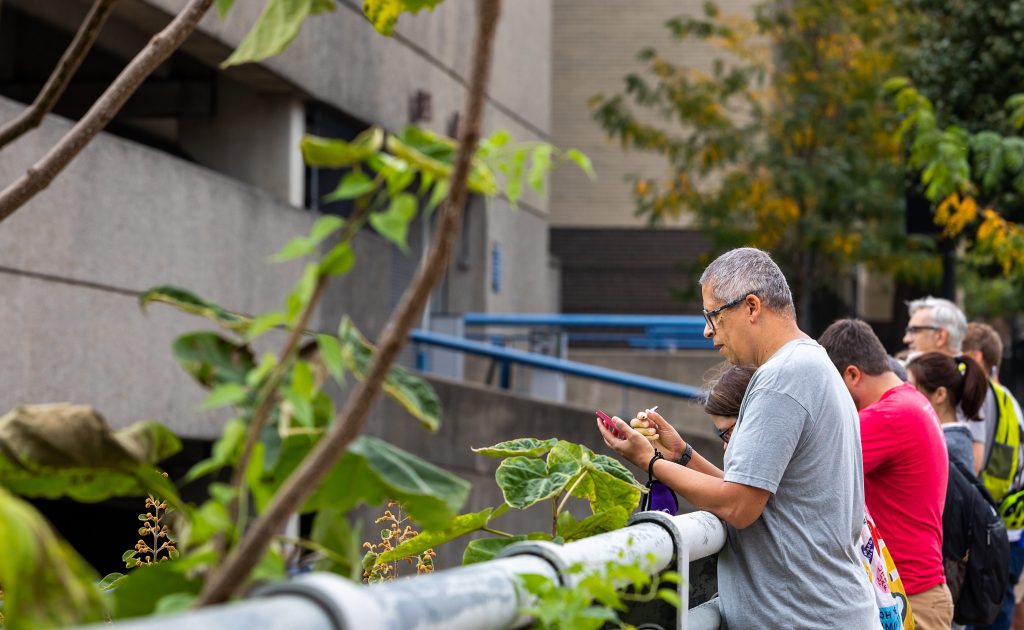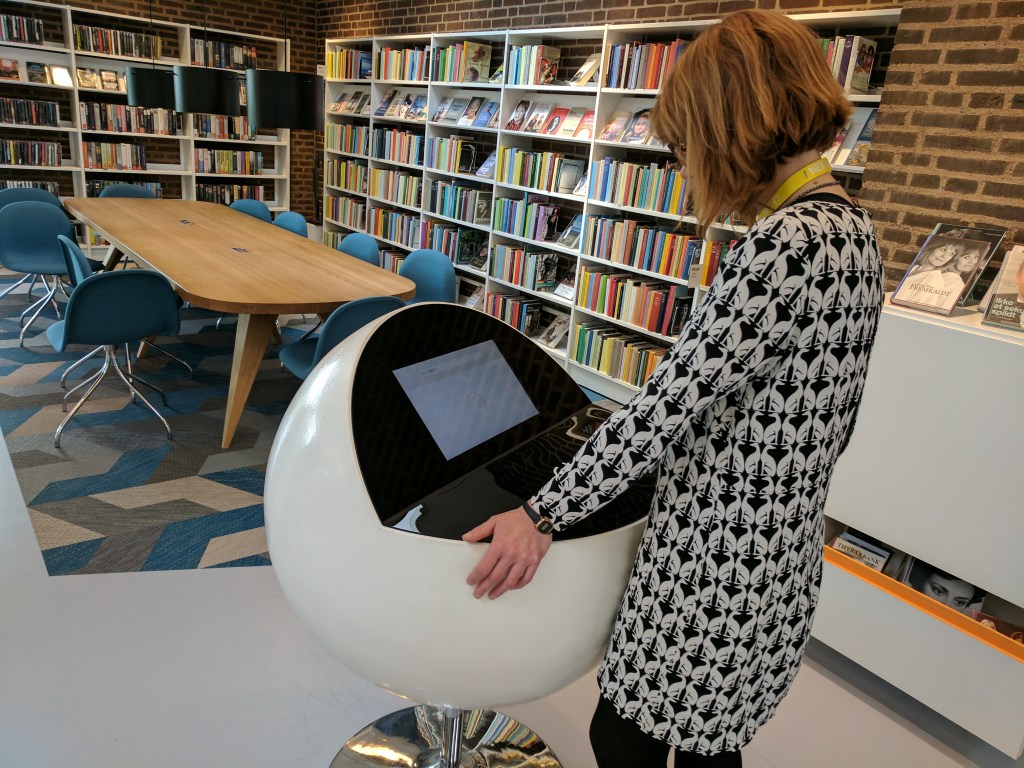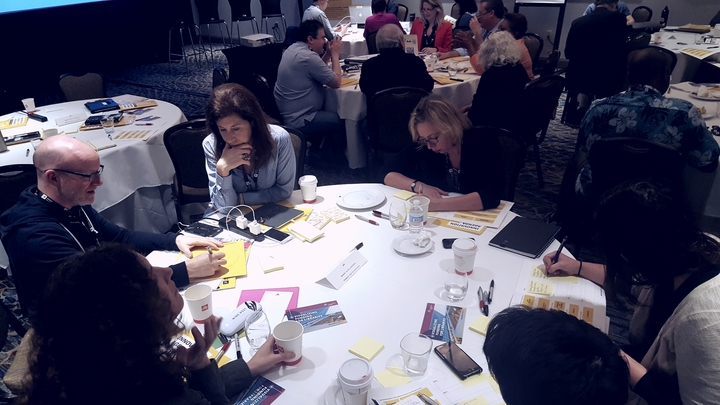
Innovation, an essential pursuit for libraries in the digital age
This post is one in a series about a gathering of library directors Knight Foundation convened in Miami Feb. 11-12, 2017, as part of its continuing work with libraries. Today, Knight Foundation is also releasing a report “Developing Clarity: Innovating in Library Systems,” and announcing a package of funding to support innovation in libraries.
The biggest challenges facing library organizations, according to Knight Foundation survey data, are funding, staff time, resources…and lack of resources.
They all affect what libraries can do, what choices they can make to be more effective, and the way they pursue innovation.
These were the opening salvos in Knight Foundation’s two-day library directors’ meeting at the Marriott Biscayne Bay in downtown Miami, Feb. 11-12. Knight organized the gathering of 40 directors as part of its continuing dialogue with library officials about their desire to innovate, and as part of a pre-conference track for its annual Media Learning Seminar.
In addition to the meeting, library directors were presented with a draft of “Developing Clarity: Innovating in Library Systems,” a new Knight Foundation report released today, and encouraged to comment on it.
The opening session of the meeting was “Why Innovate? Framing and Claiming Our Innovation Problems.” It featured a mini-debate between Felton Thomas, executive director of the Cleveland Public Library since 2009 and president of the Public Library Association since July 2016, and R. Crosby Kemper III, director of the Kansas City (Missouri) Public Library. The session was refereed by Ryan Jacoby, founder of MACHINE, a New York-based strategy and innovation company that helps its clients “think big and act small.” Jacoby authored “Developing Clarity.”
The first question Jacoby asked: Where is your innovation focus going to be?
“Our focus is tied to our strategic plan,” Thomas said. “We have five issues that our strategic partners prioritized. At the top is deficits. Education is one of those deficits. But social justice issues are also at the top of that list. In many ways, for my library… we’re the emergency room, we’re the triage unit. Last year, we provided 150,000 meals through the food bank at our library. That isn’t what we should be doing, but it’s what we have to do in order to make our community better. [In order to provide services] we have to make sure that our young people have food.”
Thomas said that convincing staff that feeding library patrons must be a part of the institution’s mission was a challenge, at least initially.
“It was very difficult for our staff early on,” he admitted. “But after they started seeing these young people coming in, literally just starving, and then started giving out lunches, they realized the importance of what we were doing. And we’ve been able to get full buy-in to that.
“We have kids who are dropped off at 9 in the morning when the library opens on a Saturday or holiday or summer day, who stay in the library all day, who have no money and no food. Behavior problems, from a practical point of view, are a nutrition problem that school is not solving. So we have innovation being thrust upon us. We work with Harvesters, which is our local food bank, to operate a kids’ café. I think most of the people in the community have no idea we’re doing that. They know Harvesters is our food bank. But they don’t know we’re a part of it as well.”
Kemper reported that “the big innovation” that was thrust on the Kansas City Public Library was the arrival of Google Fiber.
“It showed up,” he said, “and Google said it was going to transform the world—change Kansas City and transform the world.
“But it also happened at the same time that we were rolling out the library card for every child in the school district,” Kemper continued. “And we were doing that manually. We were sitting at schools where originally they told us we couldn’t do it. It turned out they couldn’t do it, so we had to do it. We have 15,000 kids in our school district and every child has a library card. At the same time, Google was running fiber and connecting schools and libraries.”
Kemper then said something that surprised at least a few in the audience.
“Think more about connections. Ultimately, Google Fiber makes almost no difference in my view… The size of the pipe isn’t the important thing. It’s the way it’s being used. And that thrusts us into innovation around that, which led to the library card project—which I think other cities in this group are also doing versions of—where the library card becomes a portal not just to a library and all the virtual things that we do, but also to homework help. We’re talking to the parks department, to the housing authority, to the art museum, and to the YMCA about making this card [provide access to] all the services in the community.”
Jacoby then guided the conversation to the subject of reactive versus proactive innovation.
“What’s your proactive innovation strategy, if you have one?” he asked. “I think what I’m hearing you say is, ‘We’re attacking community deficits. And we’re looking for those wherever they are.”
Kemper, who spent most of his career as a banker before becoming a library director, said, “I’ve always been a great reader. The library job sort of dropped in my lap. I came to the library wanting to do one particular thing that I felt was always important about libraries to me, important to the community. I wanted it to be more about citizenship. I wanted it to be more about civic engagement.”
In his role as president of the Public Library Association, Thomas described crisscrossing the country and “talking to folks, seeing a lot of the innovation that’s happening being a reaction to other things. For instance, right now, a great number of innovations are coming out of the [2016 presidential] election. We are seeing unbelievable conversations that are being created between communities. A library reacts to a lot of things and, if we’re fortunate, we find a way to be that innovator within our communities, to really hold our communities together.”
“I think that’s exactly right,” Kemper agreed. “Look at immigration. Libraries have always been a place that helped immigrants. All of a sudden, that’s a major issue. We just kept doing what we’re doing, and all of a sudden, it became a major part of the conversation. We had scheduled in the library, the day after the election—when everybody still thought Hillary Clinton was going to win—a naturalization ceremony. We had 130 new citizens who became citizens in the library the day after the election. It became a big story on social media in particular. We’re just doing stuff that we always do. But now we’re being careful about exactly how we do this on social media. We use social media a lot more with our immigration programs, which have always existed, so word gets out that we do support immigrants. We don’t ask to see a green card or visa or naturalization papers.”
Jacoby asked Kemper if his staff knows what the organization’s priorities are.
“I think one of the things that we are able to work through are our innovations through our strategic plan,” Kemper said. “It makes it a lot easier if our staff already understands and recognizes that these are focuses, that this is our priority, and then any innovations will be around those things. It gives the staff the opportunity to provide us with innovations or to innovate around the things that they know are our priority for our community.”
Next, Jacoby asked about the use of strategic plans during the previous six months. “Strategic plans are in place for us to clarify what we’re working on,” he said. “But sometimes the pace of those aren’t necessarily aligned with the pace of innovation or new service development. There’s sometimes a gap. So you kind of go through the process of coming out with a strategic plan, and in the meantime the election happens. There’s something about the pace of innovation which may or may not align with the strategic plans of libraries.”
“I think the [“Developing Clarity”] report is tremendously important for us as librarians,” Thomas replied, “as far as having conversations with our staff. There is tremendous anxiety [among library staff] around innovation. The staff members see it as additional work that’s being added on to them, ongoing. And yet they have almost accepted the technology piece of the innovation. But when it goes into these other areas of innovation, that’s when they get really bogged down in discussion.”
“When we started self-checkout,” Kemper said, “everyone thought this was an attempt to get rid of staff. Today, they understand the technology is changing in the library. They realize that the director is not Machiavelli in disguise, that we’re doing this for the convenience of our patrons, and to create a knowledge base for us, which I think is what technology is doing. Part of it is generational change.”
Bob Andelman is a Florida-based freelance journalist and author. For more, visit andelman.com.
r
-
Information and Society / Report
-
Communities and National Initiatives / Article
-
Technology / Press Release
-
Communities and National Initiatives / Article
Recent Content
-
Communities and National Initiativesarticle ·
-
Communities and National Initiativesarticle ·
-
Artsarticle ·
